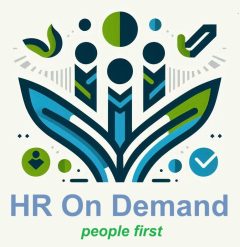The Future of Employee Engagement: Innovative Strategies for Modern Workplaces
In today’s rapidly evolving business landscape, human resources professionals are increasingly recognizing the critical importance of employee engagement as a key driver of organizational success. This comprehensive exploration will dive deep into cutting-edge strategies, tools, and approaches that can transform workplace dynamics and create more connected, motivated, and productive teams.
Understanding Employee Engagement in the Modern Workplace
Employee engagement is no longer just a buzzword – it’s a strategic imperative for organizations seeking to attract, retain, and develop top talent. Recent studies show that highly engaged teams demonstrate 21% greater profitability and can reduce turnover by up to 59%. The modern workplace demands a holistic approach that goes beyond traditional engagement methods.
Key Components of Effective Employee Engagement:
– Meaningful communication
– Recognition and appreciation
– Professional development opportunities
– Work-life balance
– Transparent organizational culture
Technology-Driven Engagement Solutions
Human resources tools have revolutionized how organizations approach employee engagement. Advanced platforms now offer comprehensive solutions that integrate multiple aspects of workforce management:
1. Real-Time Feedback Platforms
Modern engagement tools enable continuous, instantaneous feedback mechanisms. Platforms like 15Five and Reflektive allow managers to:
– Conduct regular check-ins
– Track employee sentiment
– Identify potential areas of improvement
– Recognize outstanding performance
2. Pulse Survey Technologies

Sophisticated survey tools provide instant insights into employee experiences:
– Quick, frequent micro-surveys
– Anonymous response options
– Comprehensive analytics dashboards
– Actionable recommendations
Creating a Culture of Continuous Development
Progressive organizations understand that engagement is deeply connected to personal and professional growth. Key strategies include:
Professional Development Initiatives:
– Personalized learning paths
– Mentorship programs
– Cross-functional training opportunities
– Skill development workshops
“Invest in your employees, and they will invest in your business.” – Richard Branson
Holistic Well-Being Approaches
Employee engagement extends beyond professional achievements. Comprehensive well-being programs address mental, physical, and emotional health:
Comprehensive Well-Being Elements:
– Mental health resources
– Flexible working arrangements
– Health and wellness incentives
– Financial wellness programs
– Work-life integration support
Data-Driven Engagement Strategies
Advanced human resources tools now leverage artificial intelligence and machine learning to provide unprecedented insights:
Predictive Analytics Benefits:
– Identify potential retention risks
– Forecast employee performance
– Personalize engagement strategies
– Detect early signs of workplace challenges
Statistical Insights:
– 85% of employees are not engaged or are actively disengaged at work
– Companies with strong engagement see 21% higher profitability
– Engaged employees are 87% less likely to leave their organization
Communication and Collaboration Technologies
Modern engagement strategies leverage advanced communication platforms:
Key Communication Tools:
– Slack
– Microsoft Teams
– Zoom
– Asana
– Monday.com
These platforms facilitate:
– Real-time collaboration
– Remote team connectivity
– Project management
– Transparent communication channels
Implementing Successful Engagement Strategies
Practical Steps for Organizations:
1. Conduct comprehensive engagement assessments
2. Develop personalized engagement plans
3. Invest in technology infrastructure
4. Train leadership in engagement techniques
5. Create feedback-rich environments
6. Continuously adapt and evolve strategies
Emerging Trends in Employee Engagement
Future-Focused Engagement Approaches:
– Artificial intelligence-powered personalization
– Enhanced remote work solutions
– Gamification of professional development
– Increased focus on mental health
– Hyper-personalized employee experiences
Conclusion
Employee engagement represents a dynamic, multifaceted approach to creating high-performance workplace cultures. By leveraging advanced human resources tools, embracing technological innovations, and maintaining a genuine commitment to employee well-being, organizations can create environments where talent thrives.
Success in the modern business landscape requires a holistic, adaptive approach to engagement – one that recognizes employees as the most valuable asset in any organization.





